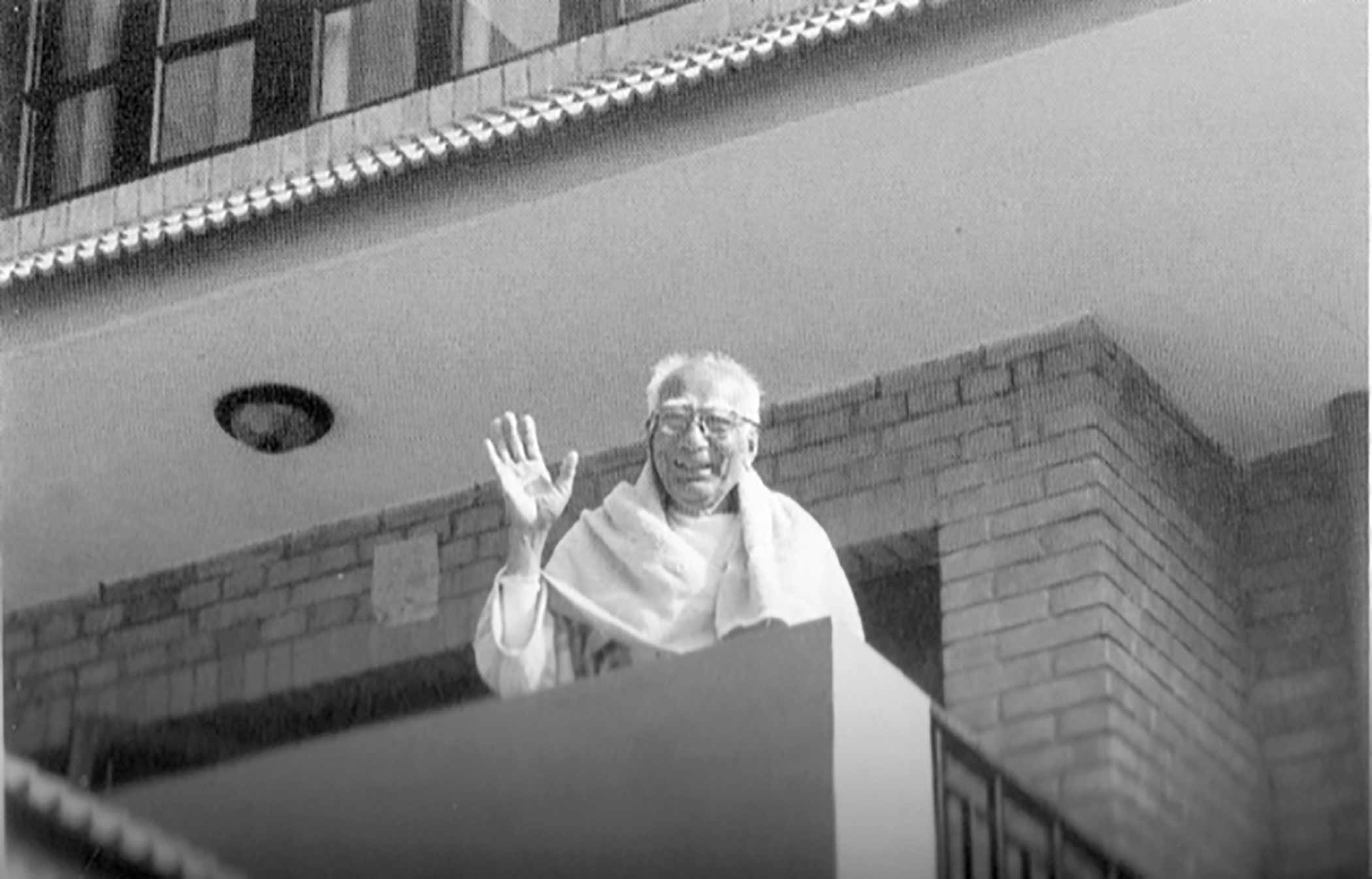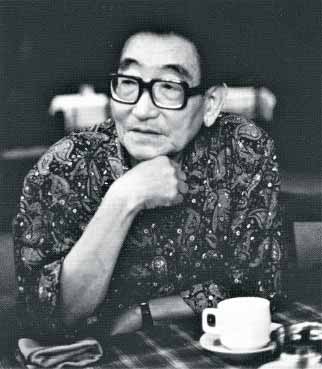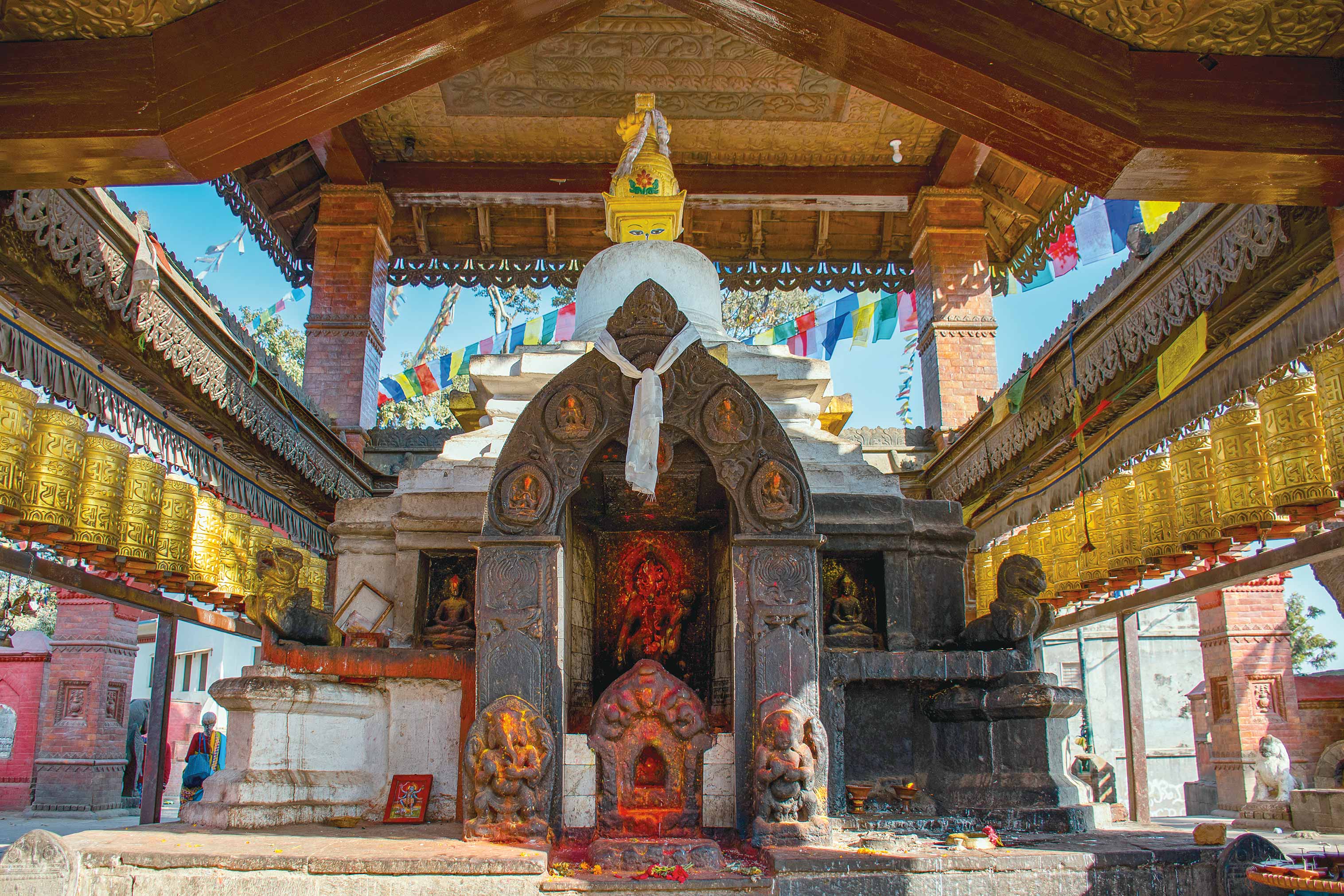On a recent trip to Tibet we stopped at the renowned cave where Milarepa meditated. Once you cross the Nepal-China friendship bridge at Kodari, and are on the highway to Lhasa, one comes across a small river valley with lush green agriculture at the bottom, with rows of greenhouses. Amidst a series of monasteries and a small village, lies the cave where the beloved singing saint and mystic Milarepa meditated. Historians tell us that Milarepa lived from AD 1052-1135 and is admired for his songs which remain popular in Tibet. It is said that Milarepa was a charismatic and eccentric figure and hence his life, various events, places he visited, teachings and travels are captured and recreated by artists in numerous scrolls, paintings and metal craft. A walk through Patan, Bauddha Stupa area or the lanes in Thamel reveals many artists who have mastered them and continue to recreate them for those who revere Milarepa.
 In this very distinct iconography, the statues of Milarepa are made with his right hand cupped close to his right ear, a gesture that is common among classical singers who do this to block off or filter noise as they practice and perform singing. Milarepa literally means “cotton clad” and is a symbol for his austere life style. He is also usually represented in paintings and statues with an emaciated body which again is a common symbol for deprivation and hardship. Milarepa was born in a village called Kya Ngatse in western Tibet to a very prosperous family. As a child, he was named Mila Thopja which literally means “a joy to hear”. As the story goes, when his father died, his uncle and aunt took all their wealth. His mother then sent him to learn sorcery which he then used to revenge his family. He was good at creating hailstones that destroyed homes and crops.
In this very distinct iconography, the statues of Milarepa are made with his right hand cupped close to his right ear, a gesture that is common among classical singers who do this to block off or filter noise as they practice and perform singing. Milarepa literally means “cotton clad” and is a symbol for his austere life style. He is also usually represented in paintings and statues with an emaciated body which again is a common symbol for deprivation and hardship. Milarepa was born in a village called Kya Ngatse in western Tibet to a very prosperous family. As a child, he was named Mila Thopja which literally means “a joy to hear”. As the story goes, when his father died, his uncle and aunt took all their wealth. His mother then sent him to learn sorcery which he then used to revenge his family. He was good at creating hailstones that destroyed homes and crops.
Historians also tell us that Milarepa’s teacher was Marpa, the famous translator and founder of the Kagyu order. It is said that Marpa was very harsh on Milarepa as a teacher because of the great deal of negative karma that the student had accumulated by using magical powers to create havoc on the enemies of his family, destroying their homes, crops, killing people and destroying livestock. The related story is that Marpa would order the construction of a multi storey building with stones from a particular quarry; and when complete, would have it dismantled and the stones returned the place of origin. This was repeated several times before the teacher was assured that Milarepa was worthy of his teachings. The last ten storey tower that he built is said to be still standing to this day.
After twelve years of diligent learning, Milarepa reached complete enlightenment and it is said that at the age of 45 began his practice from the Milarepa cave. It is also said that he survived on nettle leaf tea while in this cave and hence it is painted in light green color. The life and teaching of this unique personality is kept alive by the faithful across Tibet and the Buddhist world.










